Parachute For Gordo – The MusicTech Interview
With a sound described as ‘blissfully noisy math-punk-post-rock noise’, Parachute For Gordo have just released their third album, Possibility Of Not. Clearly possessing a slightly quirky world view, this trio from Aldershot chose a slightly unusual place to record it: an Austrian mountain… Parachute For Gordo are on a mission to be unusual. The band’s […]
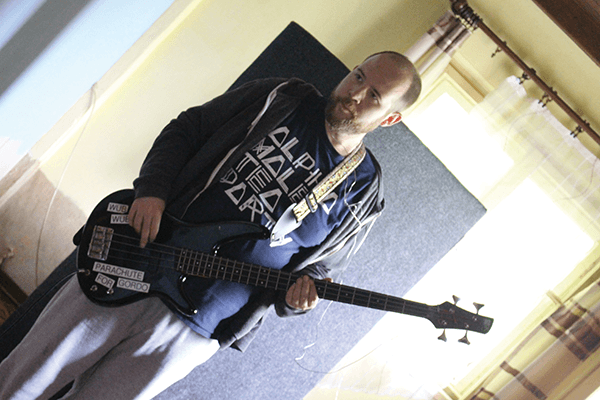
With a sound described as ‘blissfully noisy math-punk-post-rock noise’, Parachute For Gordo have just released their third album, Possibility Of Not. Clearly possessing a slightly quirky world view, this trio from Aldershot chose a slightly unusual place to record it: an Austrian mountain…
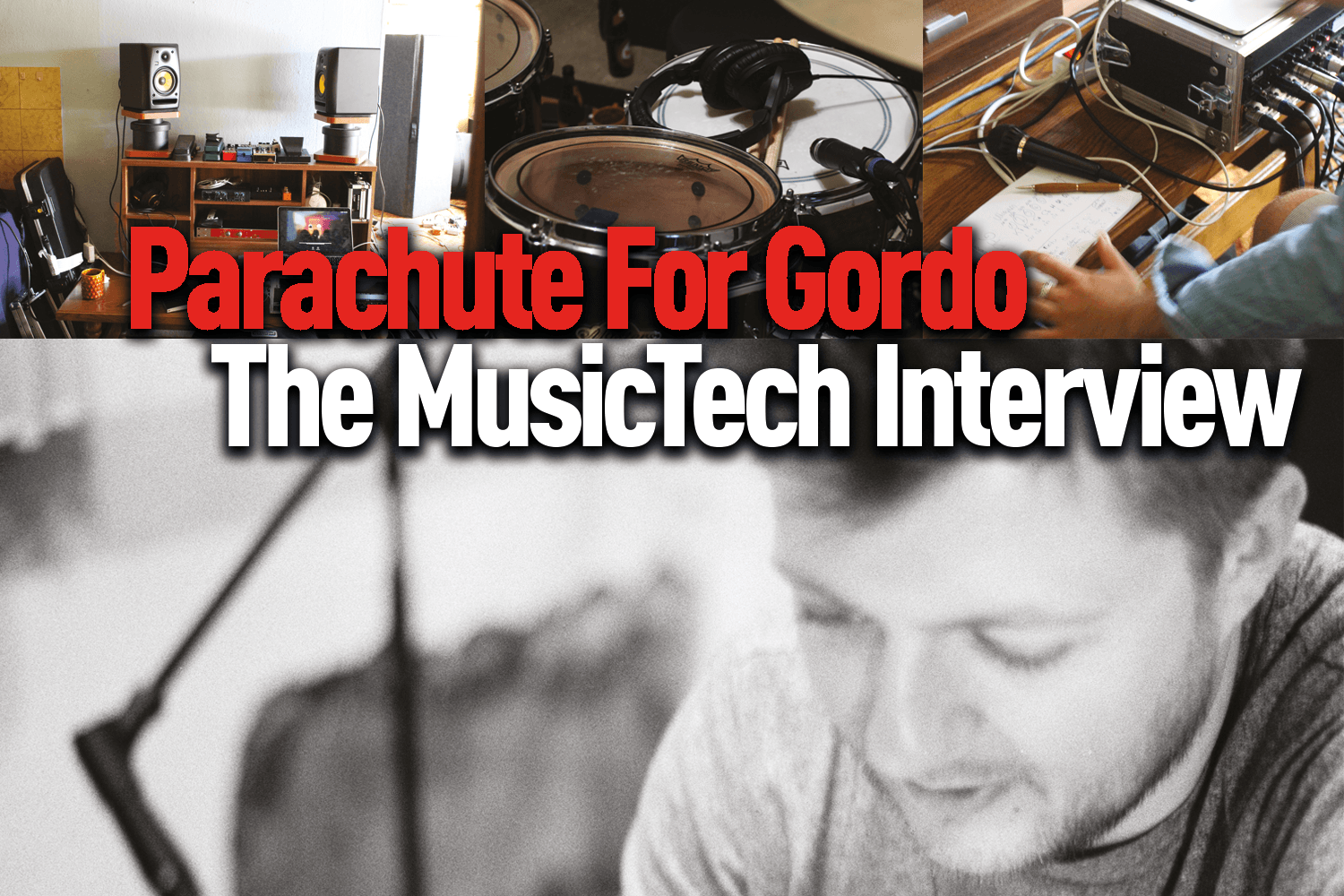
Parachute For Gordo are on a mission to be unusual. The band’s unique blend of post-rock – just throw all sorts of genre names into a pot and you still might not be close – has won them tour slots around the UK with bands including The 1975 and Fight Like Apes.
The band’s name is very probably inspired by one of the first monkeys in space (who sadly died after his parachute failed) and their first two album titles (2012’s Eight Minutes Of Weightlessness and 2014’s Ten Metres Per Second Per Second) seem inspired from the same incident.
For their third album, the band eschewed a normal recording environment and decamped to the Austrian mountains. MusicTech caught up with Laura Lee (guitars, pedals), John Harvey (bass and vocals) and Mark Glaister (drums, production, and ‘youthful vigour’) to ask the whys and hows…
MusicTech: Tell us about how you all got into music making…
John Harvey: I’ve been a bassist in various bands with friends from my teens, pretty much all the way through to now, with varying degrees of non-success. My friend originally made me play bass, because he played guitar and wanted to start a band. I couldn’t play guitar, but I could play one string well enough to play Green Day songs, so I was in.
Laura Lee: When I was 17, I decided that guitar was my thing: played for four-to-five hours a day for a year, and managed to get in to do a Music degree. It was more like a Fine Art degree of music, crazy stuff, and I was really inspired living in the North West at the time, with loads of DIY bands around the area. I knew I wanted to do this, somehow.
Mark Glaister: My musical journey began by learning piano at a young age, progressing onto brass and then into my teenage years, jamming with mates in garages at the weekends. After getting increasingly passionate about music, especially composition as well as electronic music, I went on to study it at University.
MT: Tell us more about Parachute For Gordo…
JH: It’s certainly the furthest I’ve come before, in terms of finding an audience – but also in terms of the quality of what we’re creating. This is the most ambitious project I’ve ever been involved in, and that’s what I define as ‘success’ right now. At least until the money trucks start backing up…
MT: When and how did you discover the DIY route to recording technology and music-making?
JH: DIY is pretty much the only way I understand to do anything. The idea of getting someone to pay me to do any of this is mind-boggling, so the DIY concept is entirely natural. My first bands were recording demos on four-track cassettes and MiniDiscs and awful old Pentiums, with one mic and no metronome. You do the best you can with what you have to hand. A lot of the time, I approach things with the idea of ‘What is achievable with our current access to technology?’ and more and more, the answer, these days, is ‘anything we like’.
LL: My route to making music came while living in the North West. I was surrounded by bands who were recording themselves, and using technology not only to record themselves but being inventive, using technology as an instrument in itself. The DIY route seemed the only route, if you wanted creative freedom. This band allows me to try out pretty much anything with Ableton Live within my guitar setup, and the possibilities are endless.

MG: I’ve always been into creating music and sound by pushing the tools and instruments you currently have to their limits. It’s not only fun, but extremely rewarding. Your music is going to be better quality, more creative and more ‘you’.
MT: Tell us about Possibly Of Not…
JH: It’s both an album that stands entirely alone and a collection of unique videos. Each video works as a separate piece, but they also combine to create a kind of visual album. This is pretty much the example of an idea run amok; it began as one of those ‘What if?’ conversations that all bands probably have. It turned out we had ideas fairly quickly that we felt we could pull off.
Some were more developed than others; some were about narrative, some were about texture, or evoking a feeling, but we quickly had an outline for the project. At the point of concept, we knew the album would have six songs and clock in at around half an hour – we write half-hour albums consistently – and we had maybe five written at the time. I remember the track Gopher The Throat was both written and conceptualised for the video at the same time, which was really fun.
The album itself finds us at a bit of a crossroads, as this was our first record with Mark drumming. Two of the songs on the record were written before Mark joined us; so this record was a lot about discovering what we are now, what new elements Mark was bringing to the table – and how to incorporate them. On the whole, we were practically exploding with creativity, welcoming in a new bandmate, writing some of the best songs in our catalogue with him and then making video upon video, all throughout 2016, culminating in a trip to Austria to record the album with a friend in the woods. Brilliant.
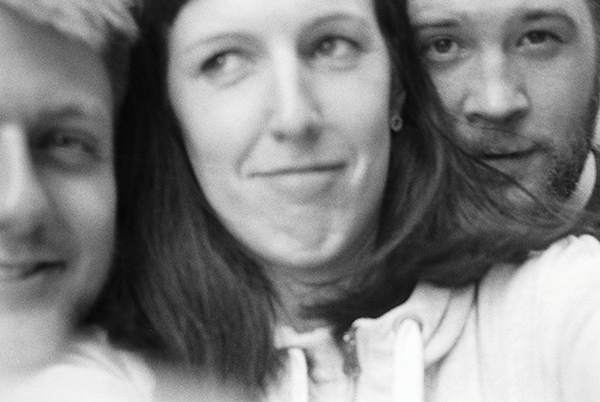
MT: How does a typical PFG track come together?
JH: We tend to write tracks where one of us will come in to practice with a small fragment – it might just be a single-bar riff, it might be a bit longer – but what is consistent is that no plan survives contact with the enemy, and whatever a song began as, it’ll end very differently. We sometimes write linearly, so that first riff in the song might be our initial seed of an idea, and the progression of the song is literally our development of that – I think Wallet Moth came together in that way.
The track Anemone To Manatee was interesting, because we originally started it by trying to finish up a song we wrote with Johnny. But in the process, we rewrote every single element of the song, ending up with the only references to the original being in the title and a tiny riff right at the end that wasn’t even in the original song, but it was a bit like it.
The questions we often ask ourselves while writing are about the nature of the song – what is it for? What mood or emotion are we trying to evoke? Does it need to be more banging, or less banging? ‘Banging’ is of course the essential element all songs have to be measured for.
MT: What inspires a typical track?
JH: I find that inspiration for our music doesn’t come independently – it comes through play. We might be labouring over a section to get it right, but it’s not until you loosen up a bit and maybe go quite far out of the box that you’ll find something good and worth preserving in a piece of music, and it might not be the thing you thought it was.
Some of the best things we have in our songs come from takes that spiralled into jams. The end of Put Your Hands Up If You Like Sloths came by pushing Laura to go longer and longer on her noise take, moving it from originally around a minute to the monstrous demonstration of effects excess it becomes on the record. It’ll never be like that take again (which was particularly good, thank heavens). Sometimes it might be longer or shorter, or better or worse. And when lightning strikes live, you’ll know it by the massive grin on my face.
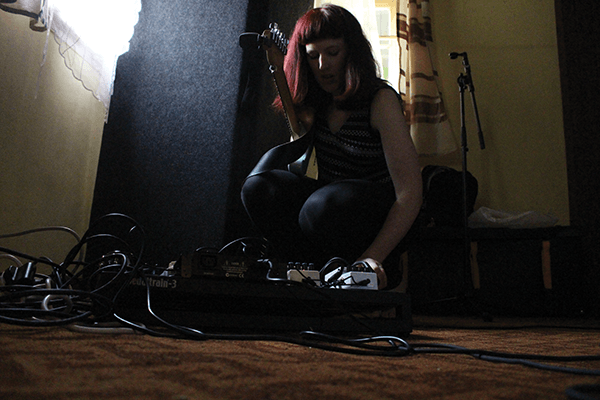
Current listening
MusicTech: What bands around at the moment do you admire?
JH: I’m an avid listener of music (as I should think we all are) and I have broad tastes outside of the ‘post-’ genres that I usually work in. So while I’ve spent much of the last year digging in the past (I really got into Bowie and Krautrock last year), recent acts I’ve enjoyed include Waking Aida, Jambinai, The Hyena Kill, Salvation Bill and Rozi Plain. Special mention must also go to Secret Black Boyfriend, which is the band our old drummer Johnny currently fronts. Their new album is really, really good. I‘d like to work with anyone who would like to work with us.
LL: Bands such as Battles, The Physics House Band, and Three Trapped Tigers are really interesting to me at the moment. These bands bring the live studio setup in their performance onstage, with the visceral element of rock. This idea of jamming with technology really interests me.
Kit list
Drums
- Pearl Masters Custom MCX shells
- Kick out mic: Shure Beta 52A
- Kick in mic: Behringer XM1800S
- Ludwig Maple Bubinga Snare
- Top mic: Shure SM58
- Bottom: Behringer B-1
- Zildjian A
- Custom cymbals
- Mics: 2 x Behringer C-2, Behringer C-1, RØDE NT-2A (room)
Guitar
- Fender Ramparte amp (mic: Behringer C-1)
- Fender Bassman amp (mics: Shure SM57, RØDE NT-1A)
Bass
- Markbass Little Mark Tube 800 head
- Markbass STD 104 HR cab with Behringer XM1800S mic
Recording
- 2015 MacBook Pro, 3.1 GHz Intel Core i7, 16GB RAM
- MoTU 1248 interface expanded with Ultragain Digital ADA8200 preamps
Monitoring
- Random collection of headphones and KRK Rokit 5s
Talking tech
MT: Tell us a little about your recording setup…
MG: The easiest way to describe it is that there’s equal space for drums, bass and guitar. They all work together, shifting the focus on each throughout a track. This comes solely from live practices recorded on a ’phone or portable recorder, listening back and thinking: ‘Does that work?’. When it came to recording, the question was: ‘How do we capture this unrefined, gritty live sound while creating a record that people would listen to?’. There are a couple of elements that contributed to this and allowed us to pull it off. The location was an outbuilding in the Austrian mountains and the equipment was varied and bodged in some way.
We had little time to refine mic placement; we had amps in the toilet and drums in a room without a proper floor and decaying walls. All of this combined, so that we walked away with recordings that were in no way perfect, but were very much ‘us’. Mixing the album was a challenge – we went through so many revisions and stages that sometimes we thought we’d never get it right. Although the material we came away from Austria with was limited, it did have great character.
The first few versions were super-polished and bright, and although they worked, they didn’t quite have that PFG edge. After more versions, we started again and went down a completely different route, stripping it down and treating it as more of a live album. Take the drums, for example – most of what you hear is a mono room mic with some punch and clarity from the close mics and stereo space from the overheads.
JH: For the bass, I use two fuzzes alternately: a Big Muff Pi and a Danelectro distortion that I’m sure is not designed for bass at all. Recently, I’ve been running my fuzzes through a Boss LS-2 Line Selector to get back a bit of the bass signal that’s otherwise lost. I also use a tremolo and a custom delay pedal, for small effects.
LL: Due to being an instrumental three-piece, I’m always trying to fill a sonic spectrum between drum and bass while allowing the guitar to play the catchy hooks and melodies at the same time. I have six delay pedals and I recently started using Max/MSP patches with my guitar sound. I’m into delays in a big way – I like them to almost take on a life of their own. I like creating walls of sound with a difference and with an immersive quality, but contrast this by being completely clean at times. Dynamic shifts are the key.
MT: What software do you use?
MG: We recorded and mixed the album using Logic X. The two go-to plug-ins you will find in most of projects are the British NEQ-1972 and British MCL-2269 by Nomad Factory. They’re versatile and have such great character. They can be used from guitars to drums and I also use them as part of the master chain. Aside from their great character, my favourite thing about them is they have the right balance of simplicity and the ability to shape sound exactly how you want.
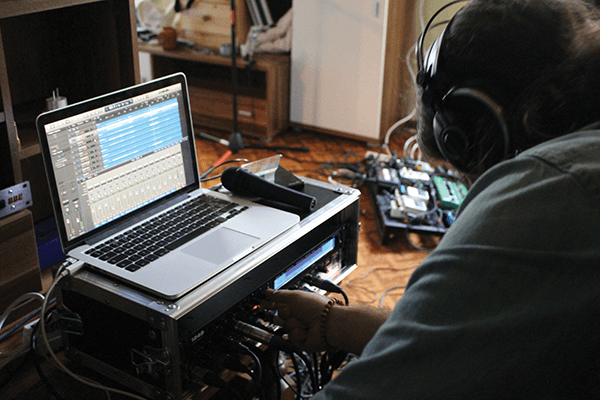
MT: It sounds like you’re good at mixing traditional recording with the virtual world…
MG: The possibilities with computer recording are endless. When I began making music on computers, there were so many limitations to how many plug-ins you could use and how many audio channels you could record simultaneously. Now, it’s possible to run a crazy number of plug-ins and virtual instruments and to track a full band on a super-portable laptop.
LL: Recently, I’ve been getting into programming my own effects and using Max/MSP in Ableton Live to experiment. I patched an algorithmic stutter patch and used the Palmer DACCAPO to change the line signal from my Focusrite soundcard back into the instrument signal, to work as a live-gig situation. The LS-2 enables me to have an effects loop to the laptop. I use the Line 6 FBV Express MKII to set samples off in Live. I’m just about using this setup for gigging, and willing to take the risk of using a computer live for expanding the guitar beyond the norm.
MT: You seem to use the net pretty well to market yourselves…
MG: The internet is an extremely powerful tool, as well as being a hindrance at times… Our new project is accompanied by a full film, which is a great way to get people to engage with the album.
MT: Where do you see the future for making a living from music?
JH: We’re pretty much at a point now where music is free, or as close to that as you can get… The only way to make serious money via streaming is to be a planetary-level success. The only way to make money though touring and physical merch is to tour all the time and do that as your job. I do think there’s still plenty of space for people like us, who are a touch above hobbyists, but not quite pros (in that this isn’t our job). I hope that as long as we carry on making good art, then people will find it and enjoy it. That’s all I want.
What this needs is for the avenues of discovery to become broader. Spotify needs to stop recommending the same 20 bands I already know. Radio needs to trust its presenters and stop playlisting everything to death. Widen up the bandwidth. If we’re all doing this for free, at least pay us some attention… Music might be free, but your attention isn’t.
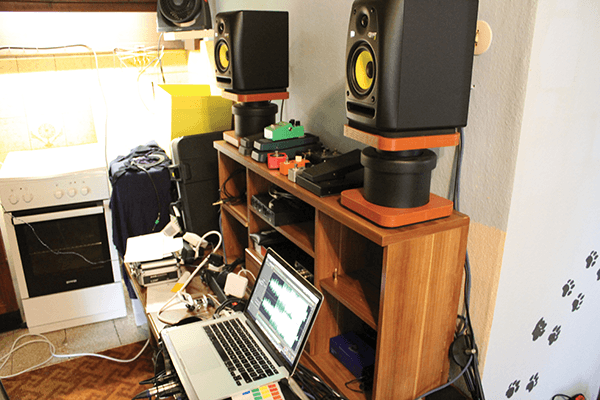
MT: What do you have planned?
JH: Our immediate future is all about Possibility Of Not and playing out live as much as we can. Beyond that, Laura has just put together a pretty far-out new effects unit using her laptop, so we’re intending to find out the limits of ‘post’ on the next record…
Advice time
MusicTech: What advice do you have from having working in the studio (or mountains in Austria)?
MG: Make, make, learn, be inspired and make! Learn what you can from other people, read books, watch videos. Let them guide you, but not control your creativity. Be inspired by other people and copy their music-making to progress yourself, but don’t feel you have to follow trends. The music that stands out and gets people listening is music that’s truly original and has ‘that sound’, which is different for each person. It’s there, but you don’t know what it is.
Make as much music as you can – never delete ideas, never delete projects, archive everything. Every idea could turn into something incredible. Dip back into projects, revisit ideas and always keep creating.”